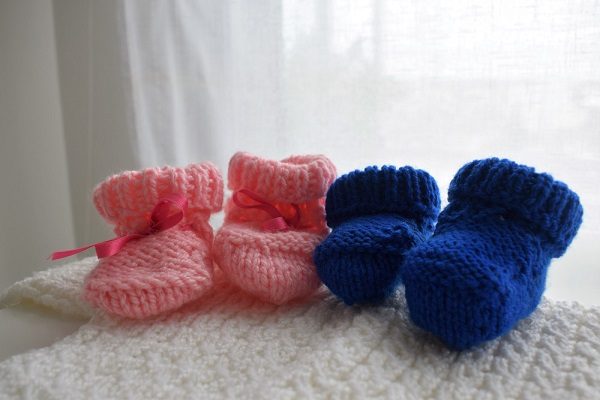Caring for Newborn Knitwear – Tips and Tricks

Welcoming a newborn into the world comes with an array of precious moments and tiny garments, often including delicate knitwear. Those soft, cosy knits are not just adorable but also require special attention when it comes to cleaning and maintenance.
To ensure these cherished pieces stay in prime condition, here are some essential tips for washing and caring for your new newborn knitwear.
- Hand Wash with Care: Hand washing is often the best method for cleaning delicate knitwear. Use a mild detergent or baby-specific laundry soap. Gently submerge the knitwear in lukewarm water and soak it for a few minutes. Avoid any vigorous rubbing or twisting, as this can cause stretching or damage to the fibres.
- Rinse Thoroughly: After washing, ensure thorough rinsing to remove all soap residue. Any remaining detergent can irritate a baby’s sensitive skin. Use clean, cool water for the final rinse until the water runs clear.
- Avoid Aggressive Wringing: Instead of wringing out the knitwear, gently press the excess water out. Rolling the garment in a clean towel can help absorb moisture without causing undue stress on the fibres.
- Use a Delicate Cycle (If Necessary): If hand washing isn’t feasible, opt for a washing machine’s delicate or wool cycle. Place the knitwear in a mesh laundry bag or pillowcase to protect it from rubbing against other items in the machine. Use a mild detergent suitable for delicate fabrics.
- Dry Flat: To maintain the garment’s shape, lay the knitwear flat on a clean, dry towel. Gently reshape it to its original dimensions. Avoid hanging knitwear to dry, as this can lead to stretching or misshaping.
- Keep Away from Direct Heat: Direct heat can damage delicate knitwear. Avoid using a tumble dryer or placing the knitwear near radiators or direct sunlight. Opt for air-drying at room temperature instead.
- Store Properly: When storing knitwear between seasons or when not in use, ensure it’s completely dry. Fold it neatly and store it in a cool, dry place away from direct sunlight and moisture. Using acid-free tissue paper can help prevent creases and maintain the garment’s shape.
- Handle Stains Promptly: Accidents happen, especially with newborns. Attend to any stains promptly using a gentle stain remover suitable for baby clothes. Always spot-test any new products on a small, inconspicuous area of the garment to ensure it won’t cause damage.
- Avoid Harsh Chemicals: Steer clear of bleach, fabric softeners, or harsh chemicals when washing knitwear. These substances can damage the delicate fibres and irritate a baby’s skin.
- Regular Inspection: Periodically inspect the knitwear for any signs of wear, tear, or loose threads. Address any issues promptly to prevent further damage.
- Separation and Sorting: Separate knitwear from other garments, especially those with zippers or Velcro, to prevent snagging. Sort the knitwear based on colour and fabric type before washing to avoid colour bleeding or damage.
- Gentle Detergents: Choose detergents specifically designed for baby clothes or those labelled as gentle and free from harsh chemicals. Look for options that are hypoallergenic and fragrance-free to minimise the risk of skin irritation.
- Consider Handmade Care: Handmade knitwear, often passed down through generations or received as gifts, may require extra attention. Follow any specific care instructions provided by the maker, or consider hand washing to preserve the craftsmanship.
- Avoid Fabric Softeners: Fabric softeners might make garments feel softer, but they can compromise the fibres of knitwear. Opt for a gentle, non-chemical-based softening alternative like white vinegar, added sparingly during the rinse cycle.
- Quick Repairs: Address any loose threads, small holes, or snags immediately to prevent further damage. A tiny stitch or using a gentle fabric glue can help mend minor issues before they worsen.
- Rotate Usage: Newborns may quickly outgrow their clothes. To prevent excessive wear on a particular knitwear piece, rotate the usage among similar items to distribute the wear evenly.
- Temperature Consideration: Pay attention to water temperature. While warm water can help dissolve detergents better, excessive heat can shrink or damage delicate knitwear. Stick to lukewarm or cool water for washing.
- Test for Colorfastness: Before washing, especially for brightly coloured or vibrant knits, perform a colourfastness test. Dab a small, hidden area with a damp white cloth to check if any colours bleed.
- Periodic Air-outs: Even if the knitwear isn’t used frequently, airing it out periodically helps prevent musty odours and ensures it remains fresh when needed.
- Seek Professional Help: For intricate or valuable knitwear items, consider seeking professional cleaning services specialising in delicate fabrics. They have the expertise and equipment to ensure thorough yet gentle cleaning.
- Read Labels Carefully: Always read the care labels attached to the garments. These labels provide specific instructions tailored to the particular material or blend used in the knitwear.
By adhering to these tips and best practices, you can extend the lifespan of newborn knitwear, preserving its softness, warmth, and charm. Caring for these tiny garments not only maintains their quality but also ensures that each item remains a precious part of your newborn’s early wardrobe and memories.
Investing time and effort into properly washing and maintaining newborn knitwear is a labour of love that rewards you with cosy, well-preserved garments that can be cherished and even passed down to future generations. Treat these delicate knits with care, and they’ll wrap your little one in comfort and warmth, creating beautiful moments along the way.


